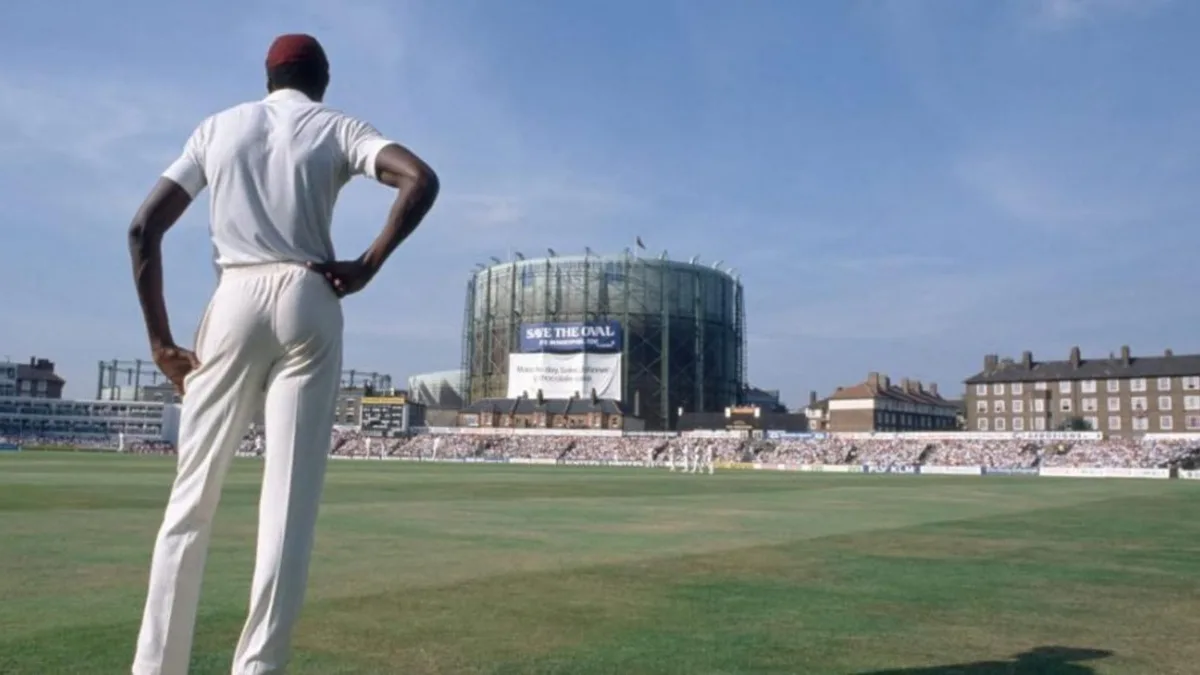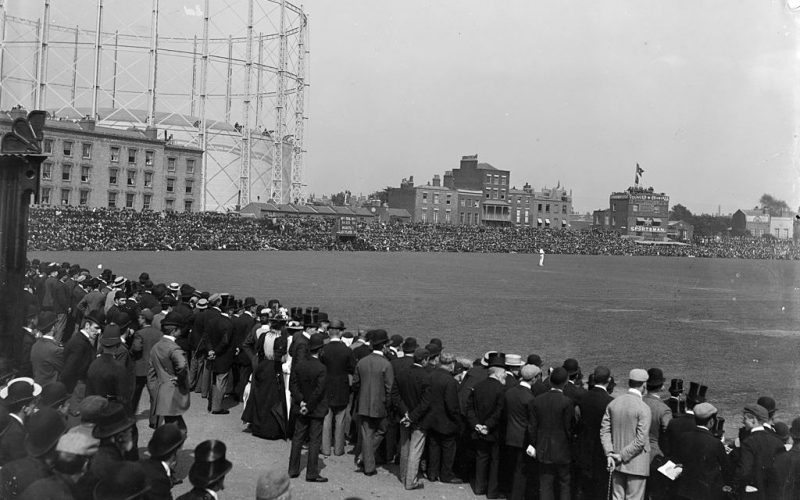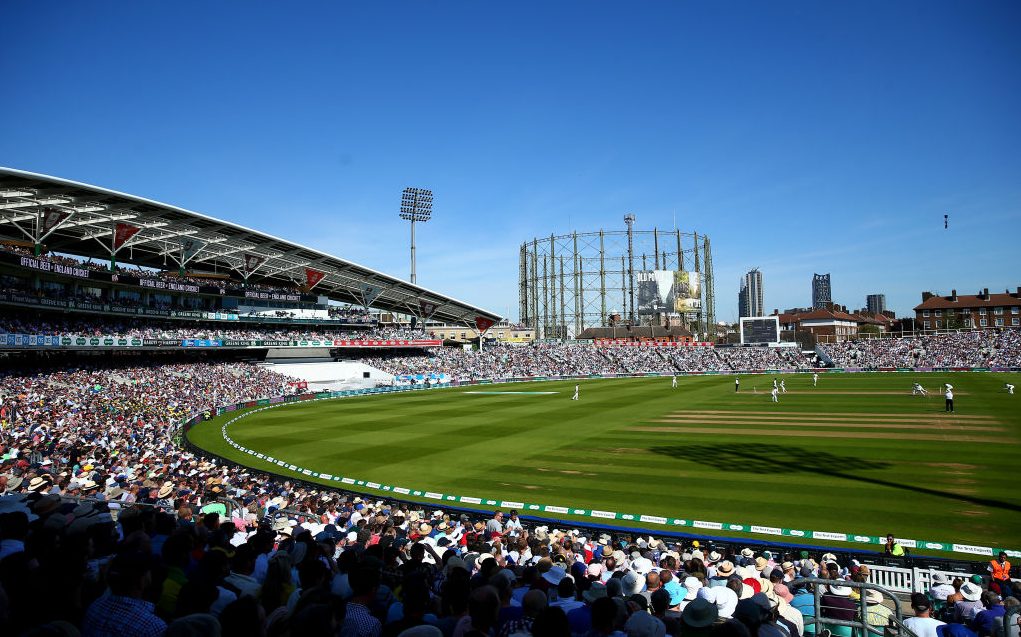
The three words emblazoned on the main gasholder at England’s first Test ground issued a stark plea: Save The Oval.
In the third issue of the Pinch Hitter, Richard Spiller talks about a photograph from a Test match at The Oval in 1988, and a banner within it that prompts attention.
Was it really under threat? The simple answer is yes. There was a real fear that the final Test of the 1988 summer against the West Indies would signal the beginning of the end for a ground which hosted the inaugural Test in the country, against Australia in 1880, as well as the first FA Cup.
Surrey had been forced to sound the alarm earlier that season when faced with one of the biggest crises in their history. Ever since a fire at Bradford City FC’s Valley Parade ground in 1985 killed 56 fans and injured many more, the old wooden stands which were a feature of many British sports grounds had been under scrutiny.
The west wing of the pavilion at The Oval – built in Victorian times and including the much-loved Nets Stand, which featured a bar with all the county crests and full-length windows looking out onto the ground – had already enjoyed some lucky escapes. Buckets of sand were kept handily placed for stewards to cope with spectators carelessly discarding cigarette ends.
When signs reading ‘no hot Ashes’ were displayed in time for the Test against Australia in August 1985, it was a reflection more of the dangers than the paucity of Allan Border’s tourists.
If the shabby but much-loved stand remained, then The Oval would lose its safety certificate to stage major matches. No internationals, no Oval.
Fundraising for a new cricket centre to commemorate England and Surrey legend Ken Barrington had already been underway for several years, raising £4.8million, which would afford the county an indoor training base. Now they combined two projects, with the nets downstairs and above them new dressing rooms, corporate boxes, bars and a proper home for the groundstaff instead of their ramshackle caravan.
The biggest problem was that, after having seen their bid for an Urban Development Grant rejected, Surrey found themselves more than £1million short, delaying the project for a year.
 Spectators standing to watch the play at The Oval in 1905
Spectators standing to watch the play at The Oval in 1905
They agreed a revolutionary deal with Australian brewers Elders for the ground to become the Foster’s Oval but there was still a long way to go when the Save The Oval Appeal was launched.
“We just didn’t have the money, it was as simple as that,” admits Derek Newton, who was chairman at the time. But he knew a man who could get it – Sir Michael, later Lord, Sandberg, recently retired as chairman of the Hong Kong & Shanghai Bank and the Hong Kong Jockey Club.
Sandberg had so many contacts that when the England off-spinner Pat Pocock was a guest in his box at the racing he reckoned “I was the only person in there I’d never heard of”.
 A jam-packed Oval during the fifth Ashes Test in September 2019
A jam-packed Oval during the fifth Ashes Test in September 2019
Newton recalls: “We were told we’d do well to get £250,000 in a year. Michael Sandberg took charge of the appeal and passed £1 million within six months. It was an astonishing achievement.”
Lending higher profile to the appeal as patron was Sir Leonard Hutton, eager to help half a century on from scoring his epic 364 – then the highest score in Test history – against Australia at The Oval in 1938. Management board chairman Raman Subba Row’s commercial flair enabled the crumbling perimeter wall to be rebuilt through a handy alliance of a local brick company and an apprentices scheme.
Once the money was in the bank it still wasn’t plain sailing. Construction was held up by problems with methane gas, which meant a whole corner of the ground was out of action for the Ashes Test of 1989.
But it was finally ready in 1990, even if the electric scoreboard was prone to blanking out now and again, and the royal seal of approval was given by the Queen, who officially opened the Ken Barrington Cricket Centre, and the Bedser Stand named after Surrey’s illustrious twins, in 1991.
The Oval had been saved and it’s never looked back since.
Richard Spiller is a freelance journalist who has covered Surrey CCC for much of his professional life and writes about them for the Wisden Almanack.
The Pinch Hitter aims to help out freelance cricket writers during the current coronavirus crisis. Read on a pay-what-you-can basis here








